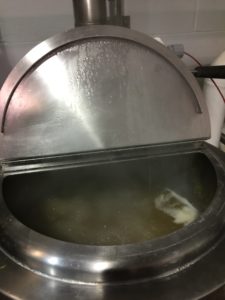
Choosing barley varieties for malting is no simple task. In fact, each kind of malt at Briess uses a specific variety of barley that is optimal for that style of malt. This is because barley varieties behave differently in each step of the malting process. Additionally, certain varieties may have an ideal performance for a kiln-dried base malt while other varieties are better suited for a high-temperature, roasted malt.
Our maltsters have spent years analyzing which barley variety are ideal for each style of Briess malt. Furthermore, by maintaining batches with a single variety of barley, contributes to a consistent, high-quality malt in every lot. This is unlike some of the “mega maltsters” who may blend multiple varieties of barley in a single run, which can cause inconsistencies from batch to batch.
But finding the perfect barley variety isn’t just a matter of taking one crop year and testing its performance in the Malthouse. Rather, it takes years of research and breeding to develop a variety that has the desired characteristics a maltster is looking for in each style of malt he produces.
Briess works with the American Malting Barley Association (AMBA) to determine which varieties we want to plant each year and all of Briess’ barley is on the AMBA approved barley list. AMBA is comprised of growers, maltsters, distillers and brewers who work together to research, test, develop and produce high-quality malting barley throughout America.
It is also important to understand that when growing barley, each variety behaves differently in the geographic location it is grown. For example, one variety may grow very well in Wyoming while in North Dakota that same variety may perform differently from yield rates to changes in its flavor profile. By understanding each growing region and which varieties are better suited for the area, growers can produce quality barley with higher yield rates and the desired flavor profiles maltsters are looking for.
Briess has chosen to grow the majority of our barley in the flood-irrigated plains of the Wyoming Big Horn Basin. This region offers a consistent, arid atmosphere that many barley varieties thrive in. Coupled with the water being controlled by gravity-fed, flood irrigation, water never touches the canopy of the crop. This creates a bright, plump, disease resistant crop that is superior to many other barley growing regions in the world.
Years of work from hundreds of growers and maltsters go into producing a single variety barley crop. It is this dedication that shines through when a successful program is created and a premium crop is produced. It is a quality that can be consistently tasted in every batch from kernel, to wort, to brew.


